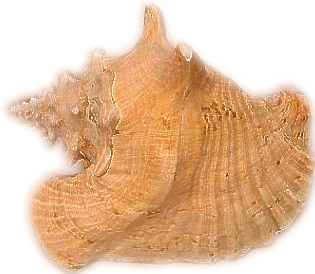|
|
|
|
|
When Columbus made land fall in the new world in October of 1492 he observed that the gentle natives, the Arawacks, not only consumed large amounts of conch but made chisels, axes, carvings, and trumpets from its shell. While the conchs are a southerly gastropod the edible pink or queen conch (Strombus gigas) is limited to the U.S. mainly the Florida Keys. There is a distinction between conch thin lipped. which is the edible pink and the thick lipped or samba conch found in the Bahamas and a few areas in Florida. The thin lipped are considered to be younger. Conch tends to be very tough and therefore is popular ground and put in chowder, made into fritters or deep fried (cracked Conch). But preparation of thin slices well pounded like Abolone create a sweet and flavorful base for an elegant dish. Preparation: Cooked by simmering in salted water or vegetable stock, also cooked just slightly, removed from the shell, and then cooked in a sauce or stew. The rather tough meat is also frequently chopped and added to soups or made into fritters. When possible buy fresh still in their shells. Conch shells should be shiny and the meat firm and clean looking. It should smell fresh and of the sea. Summer is the peak season and the freshest conches will be found in specialty shops or Italian markets.
|
|
|
|

 Conch (konk) Strombidae
Conch (konk) Strombidae